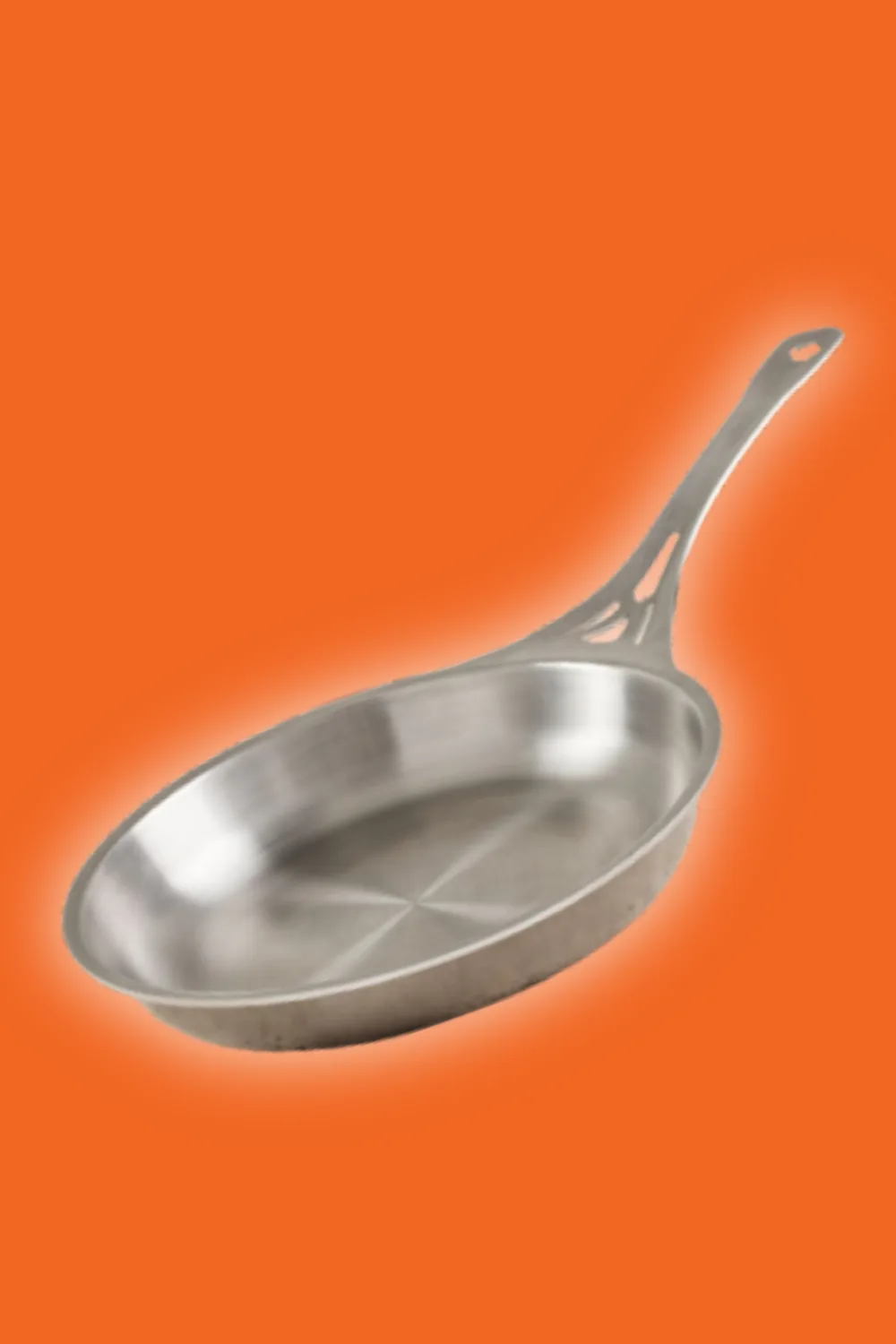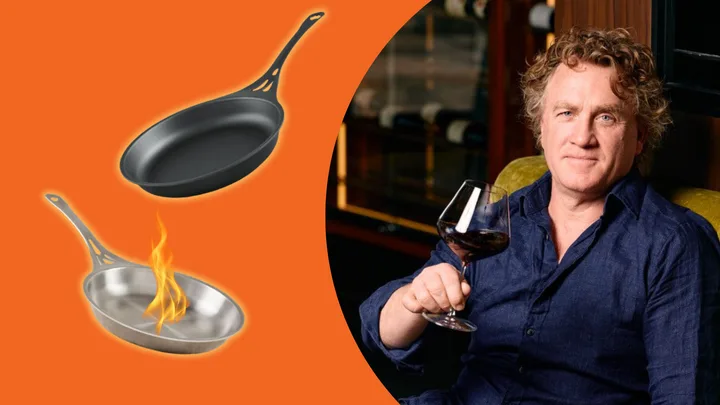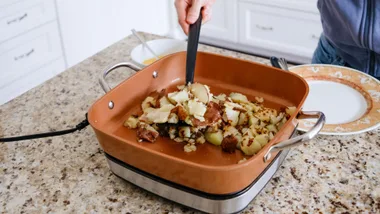So, you’re looking to elevate your cooking skills, and you can’t decide between a stainless steel pan and an iron pan. With so many cooks raving about each, how are you ever supposed to decide which to invest your well-earned coins into?
According to celebrity chef and restaurateur Adrian Richardson, choosing the right cookware can feel like a bit of a puzzle, especially when every chef has their own favourites!
“Each has its strengths, and if you treat them right, they’ll last you a lifetime,” he tells New Idea.
Is a stainless steel or an iron pan better?
At the end of the day, the best pot or pan will always be the one that suits you best, says Adrian. Whether that’s stainless steel, cast or wrought iron, enamelled or not, it shouldn’t matter too much so long as you treat it with care.
“Use high heat when you need to and lower it when you’re coaxing something to tender along,” he explains. “Understand your ingredients, respect the process, and let the pan do the job for you.”
When it comes to getting more bang for your buck, Adrian recommends you spend just a little more than you think you should.
“A good quality pan will outlast the trends, gadgets, and maybe even your kitchen itself,” he says.
It’s important to understand what you’re looking to get out of your cooking before deciding between the two (or even just sticking to non-stick, ha!). To make life a little easier, we’ve broken them down with some simple pros and cons.
The pros and cons of stainless steel and iron pans
Stainless steel:
Pros:
- Non-reactive
- Durable
- Low maintenance
- Often dishwasher-friendly
- Heats evenly
Cons:
- Not naturally non-stick
- Can be expensive
- Can be slower to heat
Wrought iron:
Pros:
- Naturally non-stick
- Excellent heat retention
- Adds small amounts of iron to food, which can be favoured by some
- Durable and long-lasting
Cons:
- Requires seasoning to prevent rust and to keep it non-stick
- Can be quite heavy
- Not dishwasher friendly
- Can react to acidic food
The best stainless steel pans to shop in 2025

01
Nöni™ 26cm Frypan
$279.95 at solidteknics.com
Best for: Acidic and liquid-based dishes
Material: 3 mm-thick ferritic wrought stainless steel
Key features:
- Non-toxic and non-nickel
- All-rounder pan with ideal size for versatility
- Safe for sauces and simmering liquids
- Induction & fire-ready
- Cooks like an iron pan but cleans like stainless steel
- Low energy use
- 100% Aussie-made
- Multi-century warranty

02
Nöni™ 22cm Sauteuse
$229.95 at solidteknics.com
Best for: The sauté toss
Material: 3 mm-thick wrought non-nickel stainless
Key features:
- Energy efficient
- Low maintenance and dishwasher friendly
- Non-nickel and non-coated
- Suitable for all heat sources (both indoor and out)
- 100% Aussie-made
- Multi-century warranty
The best wrought iron pans to shop in 2025

01
AUS-ION™ 26cm Frypan
$219.95 at solidteknics.com
Best for: Versatility
Material: Clean 3 mm-thick Australian wrought iron
Key features:
- Naturally non-toxic
- Pre-seasoned with natural rice bran oil coating
- Multi-heat compatible (can be used on gas, electric, induction, ovens, BBQs, or campfires
- Cooks like cast iron but light
- 100% Aussie-made
- Multi-century warranty

02
AUS-ION™ 24cm Grill ‘Flat’ pan
$199.95 at solidteknics.com
Best for: Toasties and skewers
Material: 3mm-thick wrought iron
Key features:
- 100% Aussie-made from Australian iron
- Suitable for all heat sources (both indoor and outdoor)
- No synthetic, toxic coating
- Pre-seasoned with non-GMO rice bran oil coating
- Multi-century warranty
How do I use my stainless steel pan properly?
Are you struggling to make your pan non-stick? The trick to stainless steel is all in the heat, Adrian says, which a lot of people can get wrong, and that can feel frustrating.
“The secret is to heat your pain first, then add oil, then only after that, add your ingredients,” he explains. “A lot of people put the oil in too early or try to start cooking before the pan is hot enough, which results in (food) sticking to the pan.”
Still a bit unsure? Adrian’s pro tip when using stainless steel is to lay down a small piece of baking paper with just a smidge of oil beneath it. Then, he instructs, place your fish (for example) skin-side down.
“It’ll cook perfectly every time, and cleanup will be a breeze!” he adds.
How can I stop an iron pan from rusting?
The benefit of using an iron pan is that it’s tough, holds heat like a dream, and when seasoned properly, it’s nearly non-stick, according to Adrian. But you have to look after it!
Seasoning your pan is essential to its care. If you’ve never seasoned a pan, Adrian explains the process as burning a thin layer of oil into the surface to create a protective coating.
“A lot of people will wash it the wrong way (like scrubbing it too hard) and that ends up stripping away that seal,” he says. “And yes, if you don’t dry it properly or store it well, it will rust! But if you treat it right, it will reward you for decades.”



